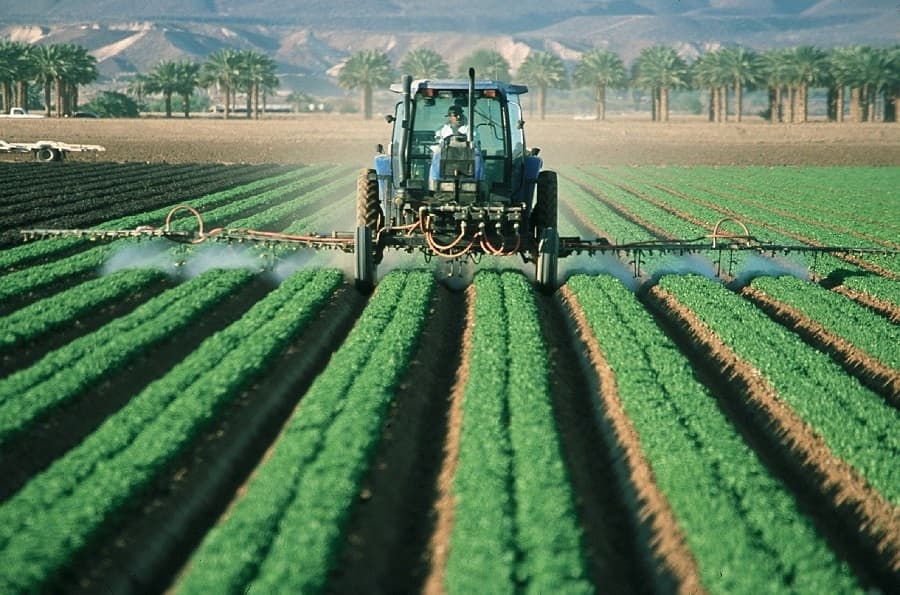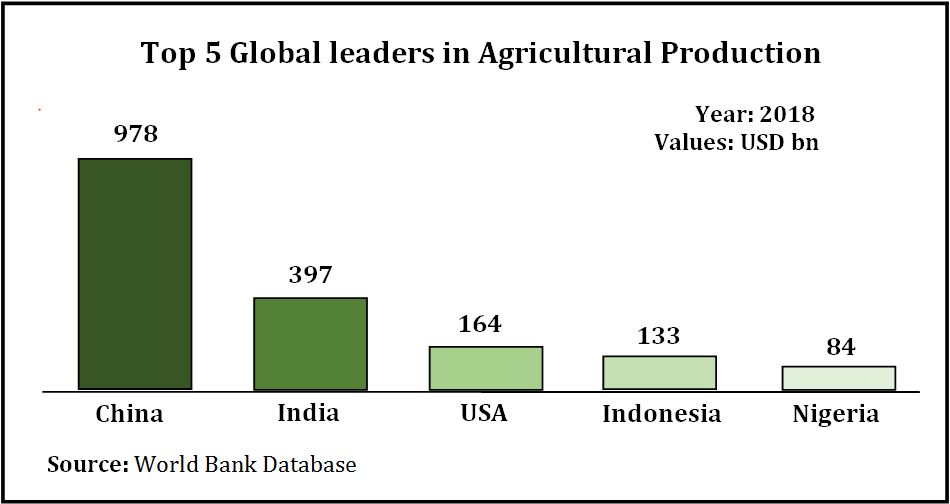Indian Agriculture a Global Superpower
It’s time to make it to be a leader in agri exports
by CENTEGRO | May 31, 2020

The more progress we make, the more prosperous we become, it seems the more skeptical people become – about the future.
Currently the media is full of scary stories and negative predictions about Indian agriculture.
Among the scary predictions made some are the following;
- We will find it difficult to feed the increasing population in India.
- Climate is changing. There are frequent droughts.
- Our farmers use pesticide indiscriminately, causing health problems.
- Farmers suicides on the rise.
- Our soil has become degraded and unproductive due to excessive use of chemical inputs.
The vested interests have so aggressively articulated these perceptions in the public domain that it has got fixed firmly in the minds of the people. Alas, the truth is just the opposite.
Very few know the phenomenal progress made by Indian agricultural sector in recent decades. Therefore, I would take this as an opportunity to share few exciting information relevant to Indian agriculture with empirical evidence.
| Sector | Agriculture | Industry | Service |
| World | 3,358 | 23,518 | 58,883 |
| India | 397 | 727 | 1,596 |
| Share | 12% | 3% | 3% |
| World Rank | 2 | 5 | 9 |
Source: World Bank Database (accessed on 27th December 2019)
GDP Value: USD billion
Note: Data for Canada is missing

India ranks second in the world in agricultural production, alone occupying around 12% of world share, after China (29%). The top three in the world agricultural production are; China > India> USA.
Our agricultural production now exceeds the USA that once supplied food grains to us to tide over food shortage and starvation in 1960s.
Contrary to the public perception, it is in agricultural sector, India holds a higher global rank, whereas in industry and service sector, it ranks lower, 5th and 9th respectively.
The agricultural sector creates wealth from land, water and light using skilled family labour and agri inputs.
What makes Indian agriculture vibrant and very different?
Like Indian culture, agriculture in India is highly diverse.
India’s ecological diversity, crop diversity and diet diversity are interconnected with each other and together, highly sustainable.
India is a multiproduct agricultural powerhouse. No other country grows and consumes as many food and non-food crops as India.
Indian agriculture in the 21st millennia is structurally different and robust than the one prevalent during the Green revolution era which began in 1970s.
In the three decades, from the 1970s until the late 1990s, India’s agriculture GDP expanded sluggishly from $25bn to $101bn, as the growth was cereals centric-mainly rice and wheat.
However, between 2000 and 2018, India’s agricultural production leapfrogged from $101bn to $397bn driven largely by high value segments such as horticulture, dairy, poultry and inland fisheries.
India ranks first in milk production, second in production of fruits and vegetables, third in fish and egg production. India also is the world’s largest producer of cotton, spices and second largest in rice and wheat production.
It’s all possible because of our multiskilled farmers. Land use intensity and labour use intensity remain high in family owned small farms. India’s small sized family farms function 12 months a year as they invariably practice a unique kind of mixed agri-horti-livestock farming.
It is common in India to see agri farmers doubling up as milk producer, goat rearers, poultry keepers, aqua-culturists etc.
Many fruit growers in India might also be producing vegetables, maize, coconut and milk etc. India’s cropping intensity is the highest in the world.
Indian agriculture is currently in a rapid growth phase. But Indian food (products) has limited access, globally. The world agriculture is highly export intensive. World agriculture production is $3358bn and out of which $1820bn is exported (~58%). Whereas, India exports only 10% of its agricultural production.
India’s agriculture commodities are extremely “price competitive”, but not “trade competitive”. This paradoxical disconnect between the two must be addressed as they are more policy related than product related. Remember, only in India, one can purchase a dozen of eggs or banana or 3 kgs of potatoes with just 1 USD. There is no reason why we can’t be global leader in the export of these commodities.
As per 2018 data, India ranks eighth largest in agricultural export in the world. Aggressive efforts (marketing) is required to increase the global market access by tactfully managing both tariff and non-tariff trade barriers.
USA has over 169 missions around the world. Most of them have Commercial Attaches with specific targets to promote US agricultural commodities. India has over 160 missions abroad. We can make our foreign missions to work as trade ambassadors for our agricultural products – with fixed annual target for agri exports.
Time has also come for India to use the “power being a large importer” of non-agrl. goods to push our agrl. exports. This is a sort of barter. If India imports $10bn worth of machineries and electronic goods from a particular country, then we need to ensure that they import at least $3bn worth of agrl products from us. In this manner we should aim to increase our agriculture exports from $39bn to $100bn in the next three years.
Increasing agricultural exports would stabilize prices in the domestic market, improve rural wealth and reduce rural-urban inequality. This would also help us (India) to reach $5tril economy by 2024, much faster.ture in
Could India become a global super power in agriculture get to know in detail

Please show the profitability trends in different crops farming . Food grains , Fruits & vegitables , poultry etc in India compared to the other countries.
Loved going through you website. What is necessary is an analysis of supply/demand & efficiency- with respect to land, water, fertiliser, pesticides. Fact is, we produce more than we want using probably 3 times more water, 4 times more land (compared to the best) employing 25 times more people making the produce so costly that the excess can not be sold.
Questions are
Why are most farmers still poor?
Why do we have so much food stocks & why are they rotting?
Why don’t we export?
Even with worlds highest efficiency, can a farmer with holding of 2 acres, even reach a level of lower middle class?
Very Informative Agri Information of India . I would like to receive monthly information from this source.
Thank you
Joseph Britto
9845157776
This is a wonderful piece of strategic thinking -particularly wrt Foreign Missions